Lessons for Teaching Grades 3 to 5
It’s important that students in grades 3-5 build on their understanding of basic economics and personal finance concepts and begin to develop knowledge of more advanced concepts. Here are some great lessons, online modules and videos you can use to integrate personal finance and economics into your third- through fifth-grade classes in reading, language arts and mathematics. Kids can practice important language arts and mathematics skills while learning about making choices, opportunity cost, resources, complementary and substitute goods, and more.
Beatrice's Goat Lesson

In this lesson, students listen to a story about Beatrice, a little girl from Uganda, who receives a goat and the impact of that goat on her family. They learn what it means to save and use estimation to decide whether or not people have enough money to reach a savings goal. They also work through a set of problems requiring that they identify how much additional money people must save to reach their goals. Students learn what opportunity cost is and identify the opportunity costs of savings decisions made by Beatrice and her family.
A Q&A is also available to use with the book.
The Berenstain Bears' Trouble with Money Lesson

In this lesson, students hear a story about two little bears whose parents use several figures of speech relating to money. Students draw a picture of a bank and write a caption explaining their illustration. Students follow along with the story by listening for additional figures of speech and how they relate to the concepts of banks and interest. The students also construct a story map of an event in the story relating to why people choose to keep their money in banks.
The Case of the Shrunken Allowance Lesson

In this lesson, students listen to a story about P.B. who thinks money is missing from the peanut butter jar on his window ledge. In addition to basic concepts of saving and spending, students learn currency equivalency and some measurement concepts.
A Q&A is also available to use with the book.
Ella's Adventures Online Modules
It's never too soon to begin teaching basic financial concepts, such as decision-making, saving, and using credit, to young students. Ella's Adventures allow your students to follow young Ella as she learns important life lessons.
Ella Saves Today Online Module
Young children are not likely to think past their piggy banks when it comes to safe places to set money aside for those special items. In this short module, they'll learn that a bank account offers security and a return on savings.
Give Ell Credit Online Module
Using some form of credit is a necessity for most adults. Unfortunately, some misuse credit, and the consequences can be devastating. The earlier young people learn about credit, the more likely they are to use it responsibly as adults. Read and listen to this story to learn what credit is, why people use credit, and how interest can affect the final cost of a good or service when bought on credit.
Once Upon a Decision Online Module
How do you make tough decisions? Do you take a guess at the correct solution? Do you ask someone else to make the decision for you? Do you simply use "eeny, meeny, miney, mo?" Read and listen to this story about Ella, who has decisions to make, and learn about the tool that helps Ella solve her problems.
Explore Economics Video Series
This series of short videos introduce elementary-age children to economic concepts.
Episode 1: The Economics of Infrastructure
This video shows how infrastructure such as roads, bridges, railroad lines, water mains, sewer pipes, and power lines support the operation of an economy.
Episode 2: The Economics of Transportation
This video shows how changes in technology changed the way and speed with which people move goods.
Episode 3: What Makes Something Useful as Money?
This video shows items that have been used as money in the past and explains why something used as money should be relatively scarce, generally acceptable, portable, durable, and divisible.
Episode 4: The Perfect Breakfast
This video helps students understand why people in different regions, states, and nations trade. It tells the story of a child in Canada who wants orange juice for breakfast and a child in Florida who wants syrup for breakfast.
The Goat in the Rug Lesson
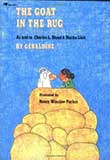
In this lesson, students listen to the book The Goat in the Rug, about a Navajo weaver who uses a number of resources and intermediate goods to make a traditional Navajo rug. The students are placed in groups to learn about productive resources and intermediate goods. They play a matching game and make posters to classify the natural resources, human resources, capital resources and intermediate goods used in the story.
Meet Kit: An American Girl Lesson

In this lesson, students listen to a story about a young girl's life in America during the Great Depression. They learn through discussion and role-playing about the impact that unemployment and reduced consumer and business spending can have on people's lives.
Peanut Butter and Cupcake Lesson
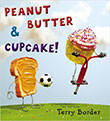
Students hear a story about Peanut Butter, a slice of bread with peanut butter, who is looking for a friend. They hear about examples of complement and substitute goods and participate in an activity where they are given a good and they find a partner with a substitute or a complement for that good. They conclude by singing a song about complements and substitutes. The lesson provides the basis for understanding that a change in the price of one good affects the demand for goods that are complements to or substitutes for that good.
The Pickle Patch Bathtub Lesson

In this lesson, students learn about opportunity cost, saving, savings goals and a savings plan by reading The Pickle Patch Bathtub. Students will develop savings plans that lead to their own savings goals.
A Q&A is also available to use with the book.
Saving Strawberry Farm Lesson
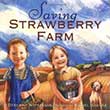
In this lesson, students learn that saving is essential to economic well-being, especially in times of extreme economic downturn. They read Saving Strawberry Farm, a story about a Depression-era family attempting to save a neighbor's farm by waging a penny auction. Students hear about the lack of goods and services available and the high rate of joblessness during this terrible time. They simulate a bank run to see how even those with savings were affected. Finally, they learn that savings are safe in banks today.
The Have a Good Day Cafe Lesson
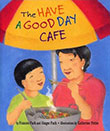
In this lesson, students learn how businesses use advertising to influence the choices consumers make. Using magazines, students see that advertisements use a combination of facts and opinions to influence tastes and preferences. Students also listen to a story about a Korean-American family that owns a food cart. They learn how the business changes as a result of competition and how business owners can influence consumers’ tastes and preferences. Working in groups, students create print advertisements for the food cart in the book to see firsthand how advertisements can influence consumers’ choices through tastes and preferences.
A Q&A is also available to use with the book.
Sky Boys: How They Built the Empire State Building Lesson
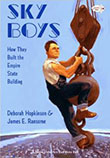
In this lesson, students learn about human resources, productivity, human capital, and physical capital. They participate in three rounds of a reasoning activity. From round to round they receive training and tools to help them improve their reasoning ability and thus increase their productivity. Students will then listen to a story about how the Empire State Building was built and identify examples of key concepts mentioned or shown in the book.
A Q&A is also available to use with the book.
Something from Nothing Lesson

In this lesson, students make a choice between a cookie and an ice cream cone and state the opportunity cost of their decisions. They then listen to the story Something from Nothing and identify all the items Grandpa makes his grandson Joseph, beginning with a blanket. Using a sheet of paper that represents Joseph's blanket, students cut out the various items Grandpa made and identify the opportunity cost for each item they cut out.
A Q&A is also available to use with the book.
Supermarket Lesson
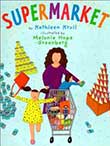
In this lesson, students read a story about a supermarket and examine the change in supermarket jobs due to the advances in technology. Students observe two demonstrations. One simulates the checkout process at a grocery store using a cash register, and the other uses scanners that are in stores today. Students conclude which method is faster and more accurate and why.
Sweet Potato Pie Lesson

Third- and fourth-grade teachers, use this lesson for the book Sweet Potato Pie to help students learn about production, specialization, and division of labor. By reading the book and participating in the activities, students will learn how specialization and division of labor contribute to increased productivity. Your students will discuss examples of these concepts from the book, then develop their own by reading about general stores, comparing them with modern-day general merchandise stores, and examining factory products. As an assessment, students choose a good and compare how the good was produced in the past with how it is produced today. The lesson assumes that students have already learned about natural, human, and capital resources and that they can define and give examples of each. The lesson builds on that understanding and has readings and strategies that align with Common Core State Standards. It allows you to integrate economics into language arts and complements students' history studies.
Treasure Map Lesson

In this lesson, students gain experience in geographic thinking using different types of maps to locate information. They begin by reviewing a current population map of the United States and answering questions about the map and its features. Next, they listen to the book Treasure Map, a story about a group of students who go on a treasure hunt. The students then practice mapping by creating a floor plan of their classroom. Next, they use this map to hunt for clues in the classroom. Finally, they practice their map-reading skills by using a thematic map (population) to answer the clues and solve a puzzle.
Uncle Jed's Barbershop Lesson
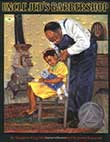
In this lesson, students listen to the book Uncle Jed's Barbershop, about an African-American barber who, despite significant setbacks, saves enough money to buy his own barbershop. From the story, students learn about saving, savings goals, opportunity cost, and segregation. The students participate in a card game to further investigate what it takes to reach a savings goal.
A Q&A is also available to use with the book.
---
If you have difficulty accessing this content due to a disability, please contact us at economiceducation@stls.frb.org or call the St. Louis Fed at 314-444-8444 and ask for Economic Education.

